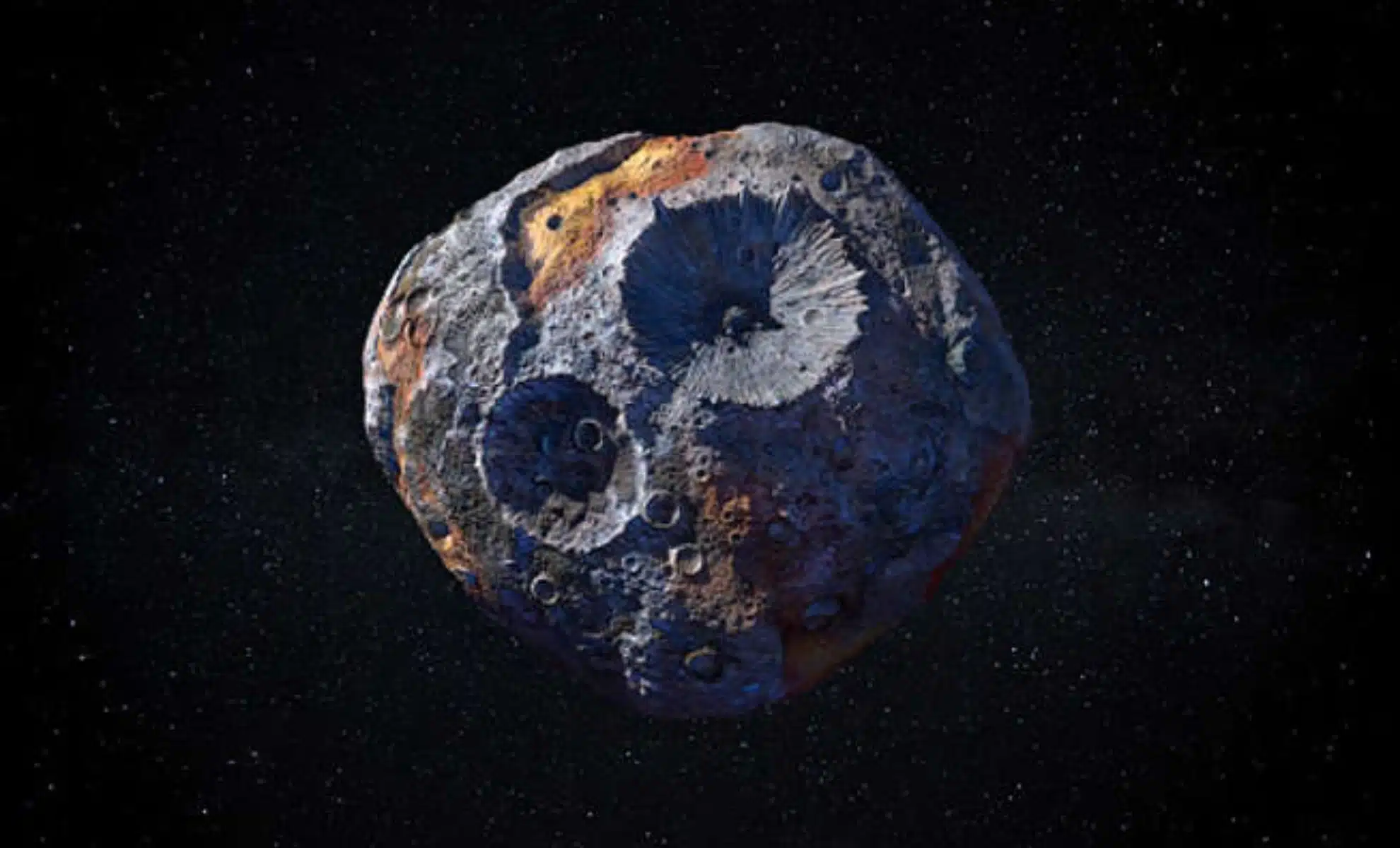NASA’s Psyche Mission, launched on October 13, 2023, is on its way to explore 16 Psyche, a massive metallic asteroid valued at an astonishing $10 quintillion—enough to hypothetically make every person on Earth a billionaire. This groundbreaking mission, the first of its kind, aims to uncover the secrets of the asteroid’s origins, which could hold clues to the formation of planets in our solar system.
Located in the asteroid belt between Mars and Jupiter, 16 Psyche is believed to be the exposed core of a failed planet. Its unique composition, including substantial amounts of iron, nickel, and possibly gold, makes it a scientific treasure trove. The spacecraft is expected to arrive in 2029, ushering in a new era of space exploration and planetary science.
Exploring a Metallic World
Stretching over 140 miles in diameter, 16 Psyche is one of the largest known asteroids in the solar system. Unlike Earth, where metallic cores lie buried beneath thick layers of mantle and crust, Psyche’s metal-rich surface is fully exposed. This makes it a natural laboratory for studying planetary cores, which play a critical role in generating magnetic fields and sustaining geologic activity.
As Newsweek reports, Benjamin Weiss, an MIT professor of planetary science, stated, “This will be the first time we’ve sent a mission to a body that is not mostly rock or ice, but metal. Not only is this asteroid potentially a metal world, but asteroids are building blocks of planets. So Psyche could tell us something about how planets formed.”
The asteroid’s composition of iron, nickel, and potentially other metals offers scientists a unique opportunity to study the building blocks of terrestrial planets. Nicola Fox, associate administrator for NASA’s Science Mission Directorate, added, “By studying asteroid Psyche, we hope to better understand our universe and our place in it, especially regarding the mysterious and impossible-to-reach metal core of our own home planet, Earth.”
Technologies Advancing the Psyche Mission
The Psyche spacecraft is a marvel of engineering, designed to cover over 1.5 billion miles during its six-year journey. Its solar-electric propulsion system, powered by hall thrusters that ionize xenon gas, allows the spacecraft to travel vast distances efficiently while conserving fuel.
In addition to its propulsion system, Psyche features the Deep Space Optical Communication (DSOC) system, a laser-based communication technology that promises to transmit data at speeds up to 100 times faster than traditional radio systems. This innovation, being tested for the first time, could revolutionize how spacecraft send information back to Earth, enabling more efficient and reliable data transmission for future missions.
The spacecraft also carries state-of-the-art instruments, including a gamma-ray spectrometer, a magnetometer, and multispectral imagers. These tools will map Psyche’s surface, analyze its composition, and search for traces of remnant magnetism. Detecting a magnetic field could confirm that Psyche was once part of a molten planetary core. As Nicola Fox noted, “I am excited to see the treasure trove of science Psyche will unlock as NASA’s first mission to a metal world.”
Embarking on a Six-Year Voyage to Uncover Planetary Origins
The Psyche spacecraft launched in October 2023 and is expected to arrive at the asteroid by 2029, following a gravity-assist maneuver around Mars in 2026. This maneuver will use Mars’s gravitational pull to adjust the spacecraft’s trajectory and increase its speed, ensuring it reaches the asteroid belt efficiently.
Once at 16 Psyche, the spacecraft will spend 26 months orbiting the asteroid, conducting in-depth studies. Scientists aim to determine whether Psyche retains any magnetic properties, which would confirm its origin as a planetary core. These findings could transform our understanding of how planets form layered structures, including cores, mantles, and crusts.
For Lindy Elkins-Tanton, the lead scientist on the Psyche mission, the asteroid’s unique nature raises fascinating questions. Reflecting on the hypothetical value of the asteroid’s metals, she mused in a 2017 interview with Global News: “That’s something I’ve contemplated for a long time. Even if we could grab a big metal piece and drag it back here…what would you do?” She further speculated, “Could you kind of sit on it and hide it and control the global resource—kind of like diamonds are controlled corporately—and protect your market? What if you decided you were going to bring it back and you were just going to solve the metal resource problems of humankind for all time? This is wild speculation obviously.”
While such discussions are purely theoretical, they underscore the asteroid’s unique significance as both a scientific target and a source of public fascination.


